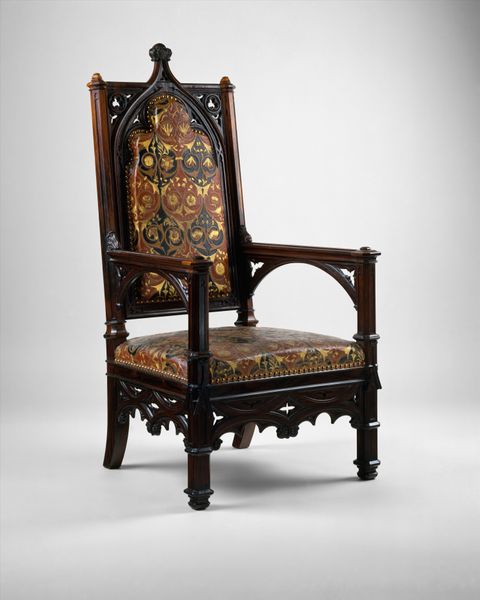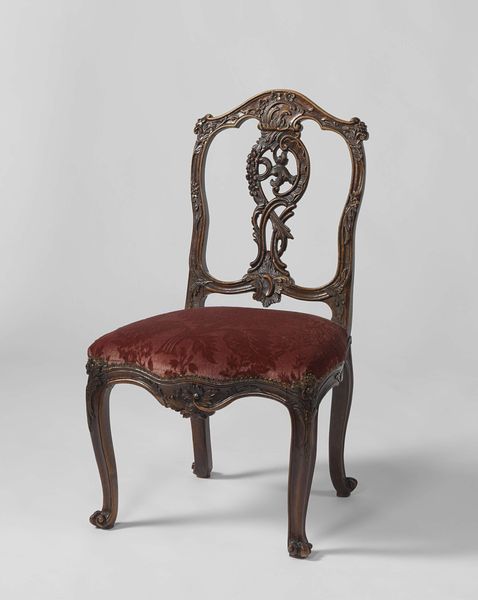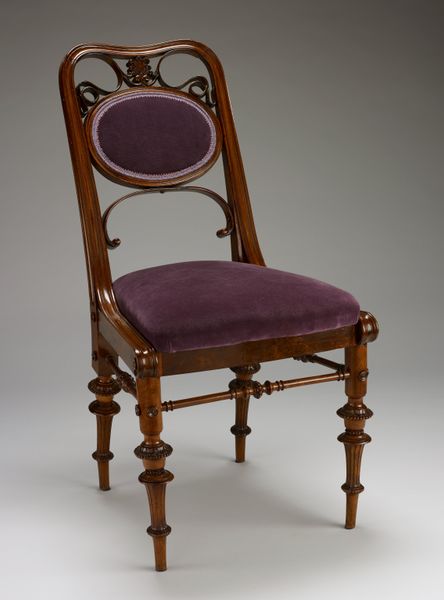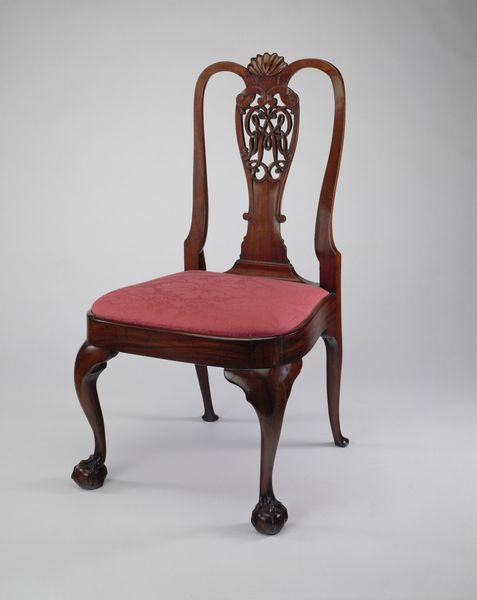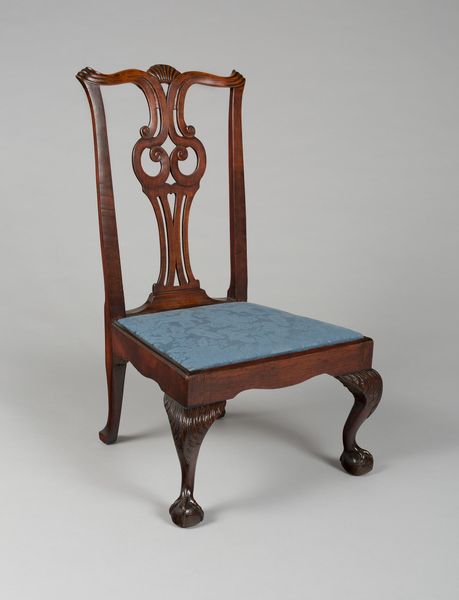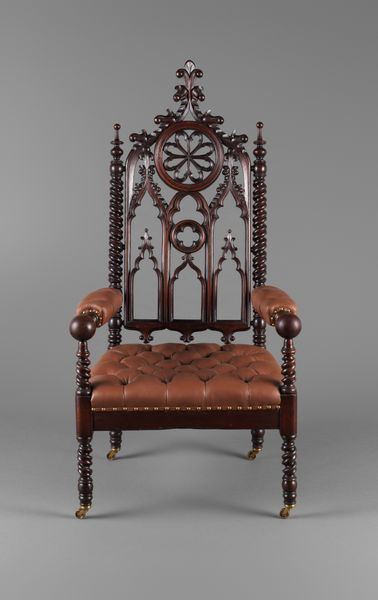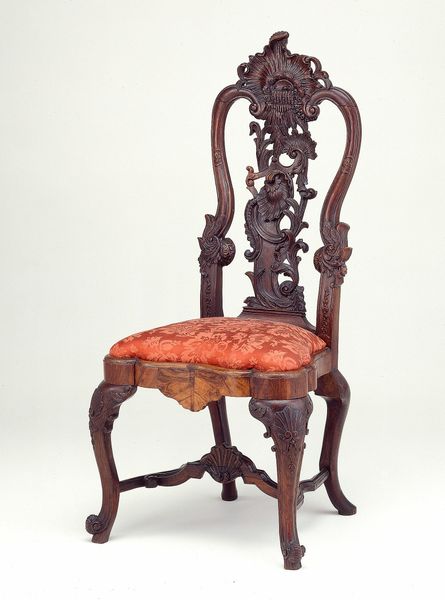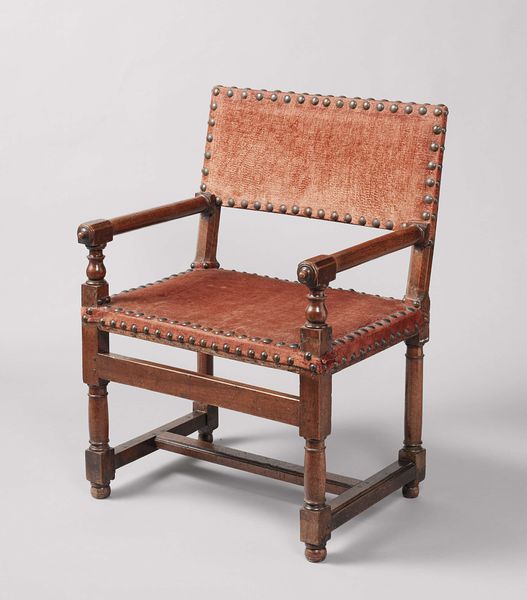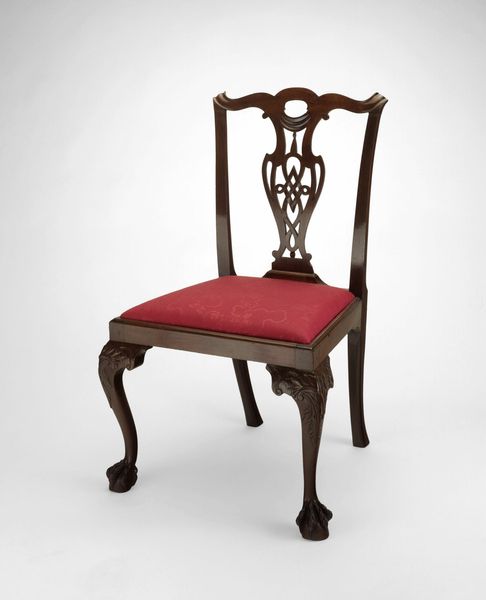
carving, wood
#
carving
#
baroque
#
furniture
#
wood
#
history-painting
#
decorative-art
Dimensions: 123.2 × 58.4 × 43.2 cm (48 1/2 × 23 × 17 in.)
Copyright: Public Domain
This armchair, a piece without a known creator, speaks volumes through its very design. Note the robust woodwork and the leather, secured by studs, materials that evoke a sense of durability and status. The chair echoes the “Sedia curulis” of ancient Rome, a seat of power for magistrates, devoid of back, initially made of ivory. Over time, this symbol evolved, with backs and arms added, as seen in thrones of monarchs. The knob or ‘bobbin’ motif is a fascinating echo through time. We see it emerge in furniture of the late 16th century, gaining prominence throughout the 17th century, during the reign of King James, in England. These bulbous turnings lend a sense of visual rhythm. The armchair is not merely furniture; it is a silent carrier of authority, adapted through different ages and cultures. The collective memory we attribute to symbols such as the chair is a potent force, engaging viewers on a subconscious level. It reminds us that even the most utilitarian objects can embody layers of historical meaning.
Comments
No comments
Be the first to comment and join the conversation on the ultimate creative platform.

